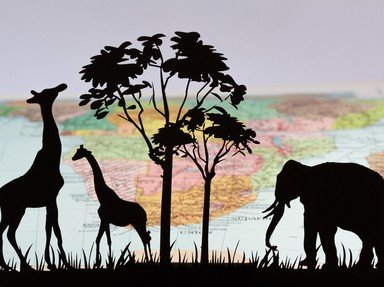Quiz Answer Key and Fun Facts
1. The first door you arrive at boasts a plaque that states "This is the fastest animal in the world!". You expect to see a cheetah but when you glance over it's a bird! What is the animal?
2. You have passed the first door with the right animal code and have made it to the second! The plaque states "This mammal sleeps more hours per day than any other animal." You're almost jealous of this marsupial as you glance at the photo. What is it?
3. You head to the next door and read the sign which states "This is the world's strongest animal!" You look over at the photo and note that it is an insect that can pull over 1,100 times its own body weight. What is it?
4. You go to the next door opening and race up to the placard. This time it says "This is the world's largest rodent". You look over at the picture and it does not appear to be any kind of mouse you have ever seen! What is it?
5. You stroll forward to the next door and notice there is a skull and crossbones symbol over the sign which says "This is the world's most venomous animal!". From the picture, it definitely appears to be aquatic. What is it?
6. You are halfway through your voyage of doors when you come to the next one. The sign states "Based on the number of olfactory receptor genes, this animal is the best at detecting smells!" You glance at the photo and don't seem surprised. What is it?
7. You are feeling pretty good and there is almost a spring in your step as you jump to the next door. Speaking of jumping, the placard is engraved with "This animal has the best jumping ability in comparison to its size than any others!" You look at the picture. What is this insect?
8. This door has a large poster next to it stating "This animal, in terms of pounds per square inch, has the strongest bite force around!" You look at the picture and shudder to think of the creature clamping down on you. What is it?
9. You guess that you must be getting close to reaching the last of these doors and slow down. Coincidentally, the plaque next to the door says "This animal is the slowest moving animal on earth with an average speed of .003 miles per hour!". You take a peek at the photo. What is the slow creature?
10. You have finally reached the last coded door. This one is a grim portal to pass through as it says "This animal has killed more human beings per year than any other!" You look at the photo with your mind full of large, giant creatures and are surprised when you see an insect. What is it?
Source: Author
stephgm67
This quiz was reviewed by FunTrivia editor
guitargoddess before going online.
Any errors found in FunTrivia content are routinely corrected through our feedback system.

